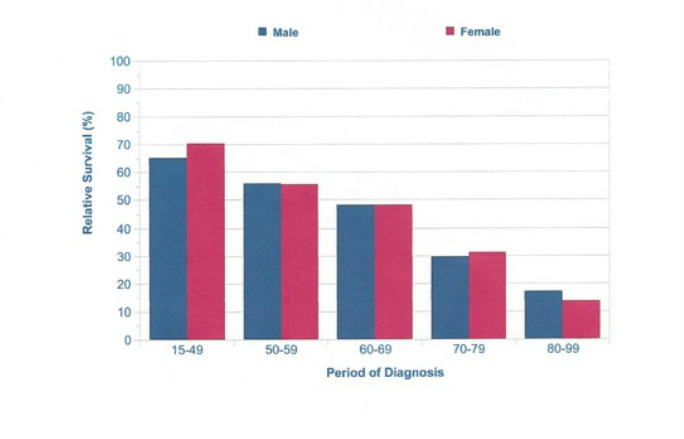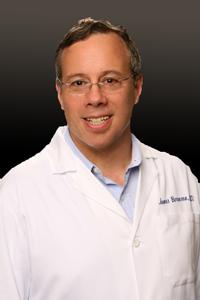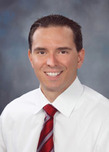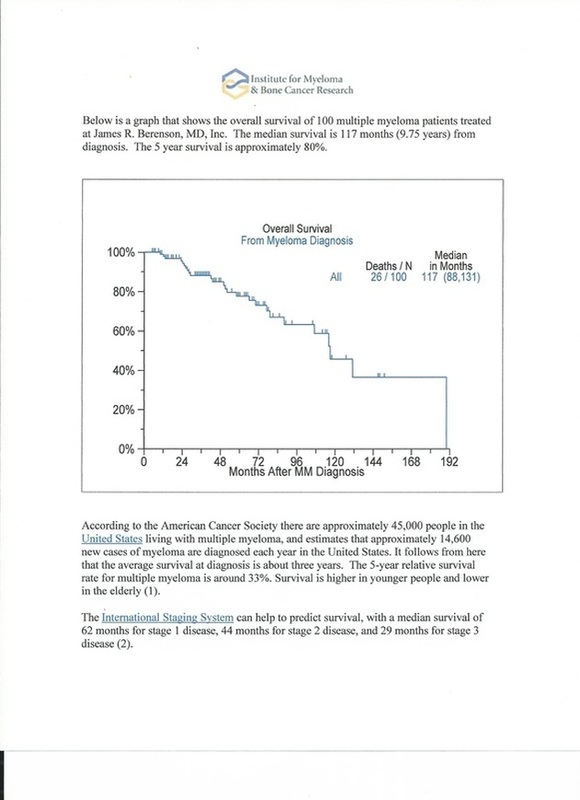One of the fundamental understandings of multiple myeloma is that the younger patients do have a better life expectancy than the older patients. This has been thought to be because the younger patients have stronger immune systems to begin with, and do not have the co-morbities (other illnesses) that come with age. In addition, they are generally more able to take the trauma of chemotherapy and transplant. It is common knowledge, but I have not been able to find the data anywhere that quantifies the difference. That is until recently.
In my research I came across a study by the United Kingdom's National Health Service. The study data can be found at the following link: http://www.cancerresearchuk.org/cancer-info/cancerstats/types/myeloma/survival/ Because the UK has a national health system, they have some of the most robust data for most any medical condition. The reporting of survival data is built into the system. Whereas, we in the USA have to rely on our National Cancer Institute to obtain information, or for other private organizations like the CIBMTR (Center for International Blood and Marrow Transplant Research) to obtain this multiple myeloma data. I therefore think that the UK's data is by definition some of the most reliable information in the world.
There is good and bad news in their survival data. The good news is that because it is so complete, it provides superb age related survival data. The bad news is that the most recent survival numbers show an average 5 year life expectancy of just 37.1%, as compared to the USA's National Cancer Institutes 5 year survival of 44.5%. One difference is that the UK data is for the years 2005 thru 2009, whereas the USA data is from 2004, but this would favor the UK data. The 20% difference could be explained by several factors. The USA has had earlier approval of some of the newer novel drugs, different demographics, or because our data only represents 30% of the population of the USA and the UK has a 100% sample. However, what this does confirm is that the average survival rates of the leading myeloma specialists is 2 to 3 times better that these averages. Which means the answer to the question; "How do you insure the longest life expectancy?" remains the same, and that is you need to have a skilled multiple myeloma specialist on your team.
Now what does the data show about survival by age? Below is the graph for the various age groups. Like I mentioned previously, the average 5 year life expectancy is 37.1%. I therefore believe you can make the case that if you are 65 years of age, your 5 year life expectancy would be approximately 48.3%. So you would be 1.2 times more likely to survive than the average myeloma patient. A 55 year old myeloma patient would have a 5 year survival rate of approximately 55.8%, or be 1.4 times more likely to survive. The last category, I will call the" less than 40 average" would be approximately 67.8%, or 2.0 times more likely to survive. So to the younger patient of around 40 years of age, you can expect to beat the averages by a fairly good margin. For example if the current average by USA National Cancer Institute is 4 years and you have twice the life expectancy of the average, you could expect to live 8 years. And if you are in the care of a skilled myeloma specialist whose average patient lives10 years or more, then you should hopefully outlive the cure.
As always, good luck and may God Bless your myeloma journey/ Gary Petersen [email protected]
Figure 3.1: Myeloma (C90), Five-Year Relative Survival Rates by Age, England, 2005-2009





 RSS Feed
RSS Feed